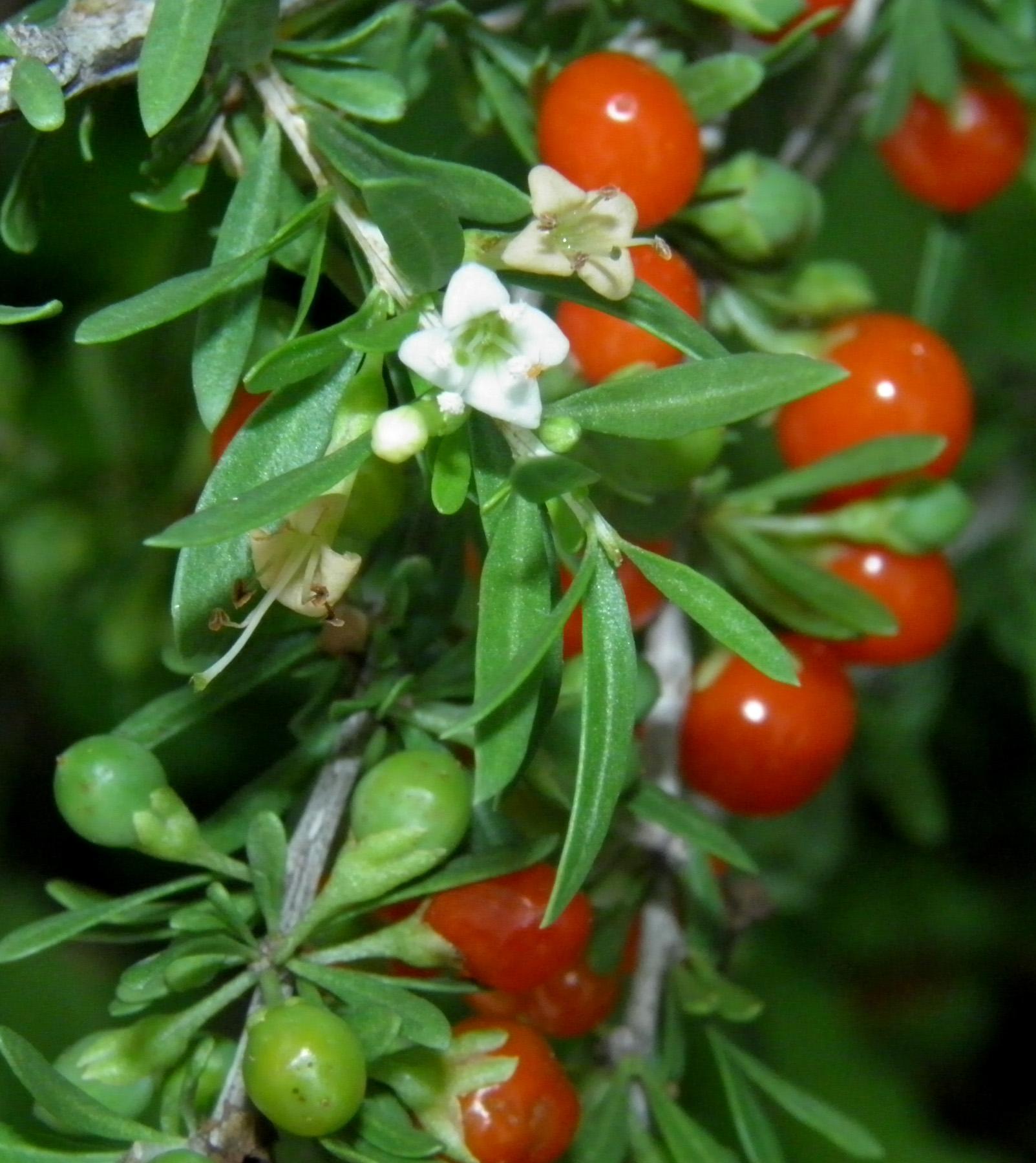
|
Family: Solanaceae |
PLANT: Shrubs or small trees, usually thorny. LEAVES: alternate, simple, usually in fascicles, more or less succulent. FLOWERS: in leaf axils, solitary or in groups of 2-6, pedicellate; calyx tubular to campanulate, generally ruptured by growing fruit, sometimes slightly accrescent, 2-6-lobed, the lobes deltate to linear or ovate; corolla white to greenish (sometimes tinged with lavender) to purple, tubular to funnelform or narrowly campanulate, with 4-6 spreading or reflexed lobes; stamens 4-6, included or exserted; filaments filiform, subequal or unequal, adnate to corolla tube proximally, often pubescent near base of free portion, sometimes enlarged and glandular at the base; anthers oval, dorsifixed, longitudinally dehiscent; style slender; stigma shortly 2-lobed; ovary 2-loculed, the locules with 1 to many ovules. FRUITS: berries (sometimes with hardened endocarps and thus drupe-like), fleshy to dry; seeds 2-many, flattened, minutely pitted, sometimes enclosed in a hardened endocarp. NOTES: ca. 80-90 (10 in AZ) species in tropical and subtropical regions of the world (Hitchcock 1932 & 1981, Chiang-Cabrera 1981). Species of Lycium seem to present various degrees of dioecy and sometimes have quite different forms of flowers on different plants (e.g., pin and thrum flowers on different individuals in L. exsertum and L. fremontii; Miller & Venable 2000). Lycium californicum has been found to have diploid populations with hermaphroditic flowers and tetraploid populations with sexually dimorphic flowers (Yeung et al. 2005). The fruits of Lycium are often edible and have been widely used by Native Americans and others in the Southwest (Hodgson 2001). REFERENCES: Windham, M.D. And G. Yatskievych. 2009. Vascular Plants of Arizona: Isoëtaceae. CANOTIA 5 (1): 27-29, 2009. Cal 4-5-lobed, campanulate to tubular, ruptured by the growing fr; cor tubular to funnelform, 4-5-lobed; anthers longitudinally dehiscent, much shorter than the slender filaments; fr a fleshy or dry berry; seeds 2-many, somewhat compressed, with strongly curved embryo; shrubs or small trees, usually thorny, with entire or minutely toothed, often fascicled lvs, the fls mostly 1-4 in the axils. 100, widespread. Gleason, Henry A. & Cronquist, Arthur J. 1991. Manual of vascular plants of northeastern United States and adjacent Canada. lxxv + 910 pp. ©The New York Botanical Garden. All rights reserved. Used by permission. |
This project was made possible in part by the Institute of Museum and Library Services [MG-70-19-0057-19].
Powered by Symbiota



